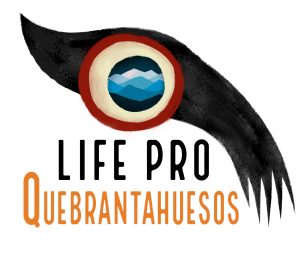Red Eléctrica and the FCQ collaborate to mark 86 km of power lines in the Cuera mountain range for the protection of birdlife.

A total of 5,000 blade-type devices have been installed on three electric transmission lines with an investment of 165,000 euros.
Red Eléctrica has completed the signaling works with bird-saving devices on three electricity transmission lines in the Cuera mountain range (Asturias) to protect the birdlife that uses this corridor and, especially, the bearded vulture, an endangered and protected species.
The signaling, which is carried out on the ground cable of the power lines to increase their visibility, consisted of the installation of some 5,000 reflective devices in 86 kilometers of cable on the Penagos – Soto de Ribera, Siero – Puente San Miguel 1 and Siero – Puente San Miguel 2 lines. This work has been carried out in collaboration with the Foundation for the Conservation of the Bearded Vulture (FCQ).
The Director of Procedures and Environment of Red Eléctrica, Luis Velasco, and the President of the Foundation for the Conservation of the Bearded Vulture, Gerardo Báguena, visited today the area where this action, which has had an investment of 165,000 euros, is already being finalized.
“These works have been a challenge for Red Eléctrica”, highlights Luis Velasco, “due to their technical complexity, since it has been necessary to take the lines out of service due to safety criteria; to the orography, which has required the use of automatic machines, and to the execution schedule, taking into account the return of the bearded vulture to the area in these days. In total, we have invested more than 2,400 hours of work by specialized personnel”.
At present, the Picos de Europa have a total of 34 specimens of bearded vultures. All of them use the Cuera corridor with more or less assiduity. The south-facing slope of the pre-coastal mountain range of Cuera is an area of preferential use for the species, both as a favorable flight zone and as a feeding ground.
According to the study carried out by the Foundation for the Conservation of the Bearded Vulture, of the 1,182,795 geolocations collected for the Cantabrian Mountains as a whole, 13.08% are concentrated in the surroundings of the power line that runs along the southern slope of the Sierra del Cuera. The surrounding areas, such as the surroundings of the Picos de Europa, the Cares gorge or the Sierra de Juan Rober, are also used intensively, so that, in addition to the geolocations collected, there are also the movements between them.
Gerardo Báguena, President of the FCQ, points out that “Red Eléctrica’s commitment in this case has been remarkable, highlighting the sensitivity shown and the record time for the execution of the reform”. The Foundation has been working for years on the conservation and protection of this species. For this purpose, and in order to continuously monitor the movements of the specimens it handles, it equips them with geolocation devices. Thus, they have generated more than 2.5 million data, allowing real-time monitoring of very precise information – bird position, height, speed, direction of travel – throughout the national territory.
Protection of avifauna
Within the framework of its commitment to sustainability and the protection and conservation of birdlife, Red Eléctrica has the project ‘Birds and power lines: mapping of flight corridors’, a tool for identifying and mapping the areas of presence and flight paths of birds, allowing the preparation of sensitivity maps that identify the areas of greatest potential risk of collision in order to adopt the most appropriate and effective corrective measures, and improve the compatibility of electrical installations with birds.
In this sense, the company has a Signaling Plan to which it allocates more than one million euros annually and acts on more than 200 kilometers of lines each year, thus minimizing the impact of sensitive electrical installations on birdlife, identified internally and also with the collaboration of regional administrations and environmental organizations.
Red Eléctrica also continuously studies the effectiveness of the different line signaling systems and researches on new protection devices, in addition to carrying out different actions to guarantee the safe interaction of birdlife with the electric pylons when they use them as nesting, resting or surveillance areas.






